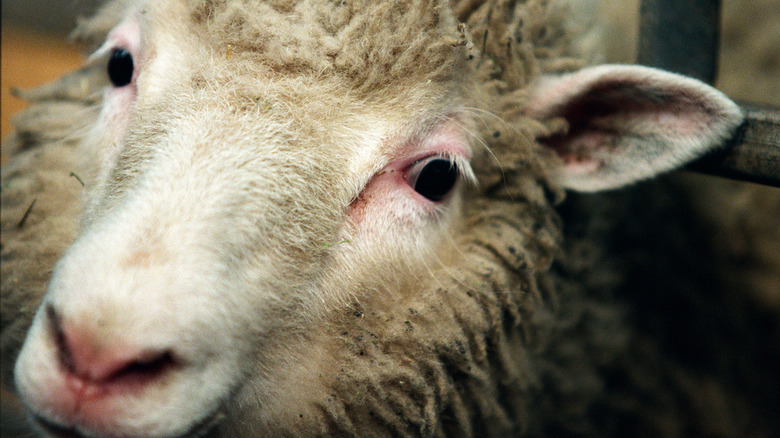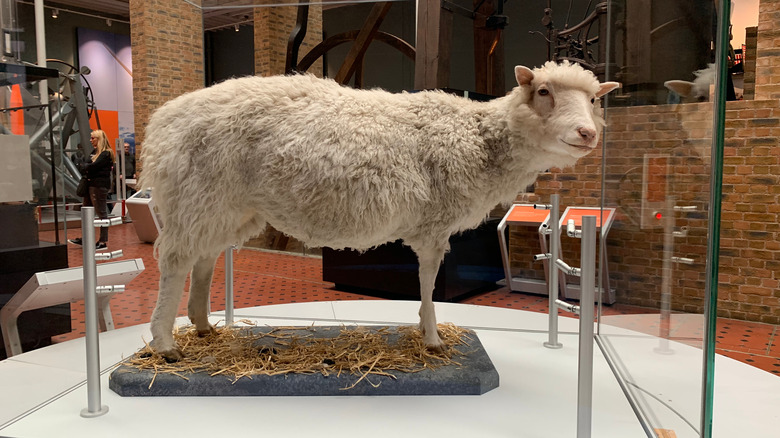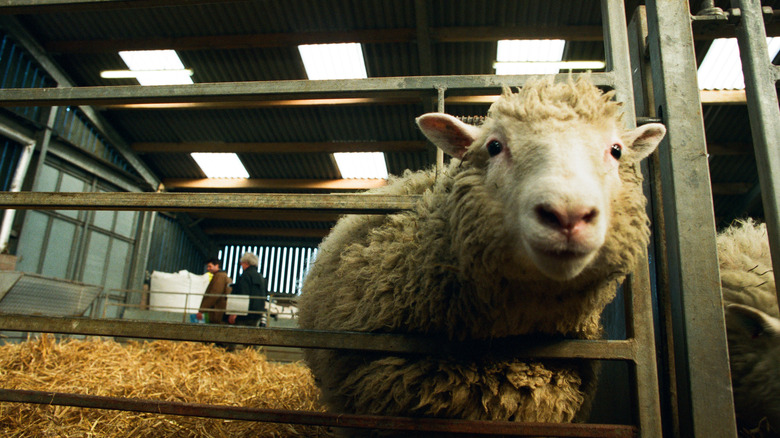What Happened To Dolly The Sheep And Her Clones?
History's most famous sheep, the photogenic Dolly was the world's first cloned mammal produced from an adult cell. It took a labor-intensive 276 attempts to produce Dolly, and the celebrated sheep became a major scientific milestone whose furry visage was splashed across newspapers and magazines around the world. Cheekily named after Dolly Parton because she was born from a mammary cell, the sci-fi sheep became a well-loved celebrity in the late 90s just like her namesake.
Dolly was born in July 1996 thanks to a surrogate, and lived most of her life at the Roselin Institute in Scotland. Although her body was extensively studied she still lived a basically normal life for a sheep. She was even allowed to breed with a ram, producing six lambs: Bonnie, Sally, Rosie, Lucy, Darcie, and Cotton.
Unfortunately, Dolly's body was plagued with health problems, and she would not live to see the 12 years that normal sheep can expect. Dolly's flock of additional clones, which were formed from "the same cell line" per The Washington Post, proved to be far more successful, proving once and for all that cloning can create normal healthy animals.
Dolly' short existence
Sadly, within just a few short years, Dolly the sheep was no more — although her body was donated to the National Museum of Scotland to become a display exhibit. Even if you aren't able to make it to Scotland, you can examine a 3D digital model of Dolly on the Museum's website.
As previously mentioned, Dolly's life was cut short by health problems. In 2000, Dolly was found to have contracted the JSRV virus, an illness that causes lung cancer in sheep. At the age of just 5, she was also burdened with severe osteoarthritis for reasons unknown. Although her arthritis was treatable, the tumors that developed in her lungs were not. At the age of 6, the long-suffering sheep was put to sleep on Valentine's Day, in 2003.
At the time, it was widely believed that Dolly may have suffered from unusually short telomeres for her age, caused by the cloning process. Telomeres act like caps on the ends of chromosomes, and they are linked to aging because they protect DNA. They get shorter each time a cell divides, so having short telomeres is not a good thing and would effectively have made Dolly older than her real age. However, the success of Dolly's fellow clones seems to suggest this was not the case. It is now believed that Dolly was just unlucky.
The clone's clones
Following the creation of Dolly, 13 more sheep clones were created. Four of these Denise, Dianna, Daisy, and Debbie were identical to Dolly, made from the same mammary gland cell. Unlike Dolly, the four new clones lived mostly outside, due to fears that keeping them inside could increase the likelihood of illness.
The new sheep proved to be far healthier, which satisfied some researchers that cloning does not speed up the aging process. On the other hand, according to The New York Times, in 2016 some of the 13 clones also developed arthritis, with Debbie's being the worst and most advanced, but even her levels were not highly unusual. Other tests revealed that the cloned sheep were relatively healthy, with normal blood pressure and insulin resistance.
That year it was reported that Dolly's four copies had all reached the grand old age of 9 — a respectable age for sheep. It was decided once the flock hit 10 years of age, that they should be euthanized so that a postmortem study could be done on the flock, according to NPR.


